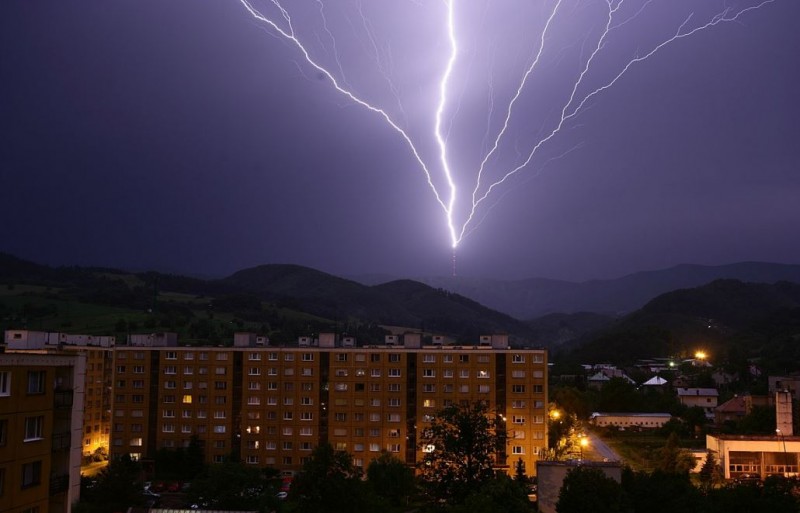
Introduction
Have you ever witnessed a fascinating and elusive natural phenomenon during a thunderstorm? Ball lightning, a mysterious occurrence characterized by glowing spheres of light, has captivated scientists and intrigued observers for centuries. In this article, we will delve into the intriguing world of ball lightning, exploring its nature, scientific theories, and the ongoing efforts to unravel its secrets.
1. What is Ball Lightning?
Ball lightning refers to a phenomenon where luminous spheres of various sizes, typically ranging from a golf ball to a basketball, appear during or after a thunderstorm. These glowing orbs can exhibit a wide range of colors, such as white, yellow, orange, or even red, and may last for several seconds to minutes before vanishing or dissipating.
2. Historical Accounts and Observations
Ball lightning has been reported throughout history, with recorded sightings dating back centuries. Many historical accounts describe eyewitness reports of luminous balls floating in the air, sometimes accompanied by hissing or crackling sounds. These sightings have often sparked curiosity and speculation among both scientists and the general public.
3. Physical Characteristics
Ball lightning typically displays several distinct physical characteristics. The spheres are reported to be self-contained, with well-defined boundaries and a smooth or glowing surface. Witnesses have observed them hovering above the ground or moving erratically through the air, sometimes passing through solid objects without causing any damage.
4. Formation and Duration
The exact process behind ball lightning formation remains a topic of scientific investigation. It is commonly associated with thunderstorms, suggesting a link to the electrical discharges occurring during these weather events. The lifespan of ball lightning varies greatly, ranging from brief flashes to more prolonged appearances. Understanding its formation and duration is crucial to unraveling the mysteries surrounding this phenomenon.
5. Scientific Theories
Scientists have proposed several theories to explain the nature of ball lightning, although none have yet been definitively proven. These theories involve plasma and ionization, electromagnetic fields, and chemical reactions triggered by lightning strikes and thunderstorms. Each hypothesis provides valuable insights into different aspects of ball lightning, contributing to our understanding of this intriguing phenomenon.
6. Plasma and Ionization
One prominent theory suggests that ball lightning is a form of plasma, a state of matter composed of ionized gas. Plasma can be created when lightning strikes the ground or other objects, generating a high-energy environment conducive to the formation of luminous spheres. This theory helps explain some of the electrical properties associated with ball lightning.
7. Electromagnetic Fields
Another hypothesis focuses on the role of electromagnetic fields in ball lightning formation. Thunderstorms generate strong electric and magnetic fields, which could potentially create a localized plasma ball. These fields might interact with the surrounding environment, influencing the size, movement, and behavior of the glowing spheres.
8. Chemical Reactions
Chemical reactions triggered by lightning strikes and thunderstorms have also been proposed as a contributing factor to ball lightning. The sudden release of energy during these events could induce chemical changes in the atmosphere, leading to the formation of luminous orbs. Further research is needed to explore this theory and determine its validity.
9. Lightning Strikes and Thunderstorms
Ball lightning is often associated with thunderstorms and lightning strikes. It is hypothesized that the powerful electrical discharges during a storm create an environment conducive to the formation of ball lightning. This connection highlights the importance of studying thunderstorms and lightning to gain a deeper understanding of this elusive phenomenon.
10. Laboratory Reproduction
Recreating ball lightning in a controlled laboratory environment has proven challenging. Scientists have made progress in replicating some of its characteristics using high-voltage discharges, microwave fields, and other experimental setups. These efforts contribute to our understanding of the underlying mechanisms and help validate or refine existing theories.
11. Unusual Properties and Behaviors
Ball lightning exhibits various unusual properties and behaviors that distinguish it from other atmospheric phenomena. Witnesses have reported spheres passing through walls, splitting into smaller orbs, or even exploding with a loud bang. These unique properties make ball lightning a subject of great interest for researchers aiming to uncover its mechanisms and potential applications.
12. Visual and Auditory Effects
Observations of ball lightning often involve intriguing visual and auditory effects. Witnesses have described sizzling or crackling sounds accompanying the appearance of the spheres. Some reports even mention a distinct smell reminiscent of ozone. Understanding these sensory aspects contributes to the overall understanding of ball lightning and its interaction with the environment.
13. Hazards and Safety Precautions
While ball lightning is generally considered a rare phenomenon, it can pose potential hazards. There have been isolated reports of ball lightning causing damage to structures or injuring individuals in close proximity. Due to the unpredictable and elusive nature of these glowing orbs, it is essential to exercise caution and follow appropriate safety measures during thunderstorms.
14. Challenges in Studying Ball Lightning
Studying ball lightning poses numerous challenges for researchers. Its rarity, unpredictability, and fleeting nature make it difficult to capture and analyze systematically. The lack of reproducibility in laboratory settings further adds to the complexity. Overcoming these challenges requires innovative experimental designs, advanced measurement techniques, and collaborative efforts among scientists worldwide.
15. Future Directions and Research Opportunities
As technology advances and our understanding of atmospheric phenomena deepens, new avenues for investigating ball lightning emerge. Future research may involve enhanced monitoring during thunderstorms, the development of advanced detection methods, and improved modeling to simulate its formation and behavior. By unraveling the mysteries surrounding ball lightning, we gain insights into the fundamental processes of nature and open the door to potential practical applications.
Conclusion
Ball lightning continues to mystify and intrigue both scientists and observers alike. Its elusive nature, unique properties, and scientific enigma make it a captivating subject for further investigation. As we explore the depths of this fascinating phenomenon, we inch closer to unraveling its secrets and gaining a deeper understanding of the natural world.
India's Space Program Soars, ISRO Inspires Scientific Advancement